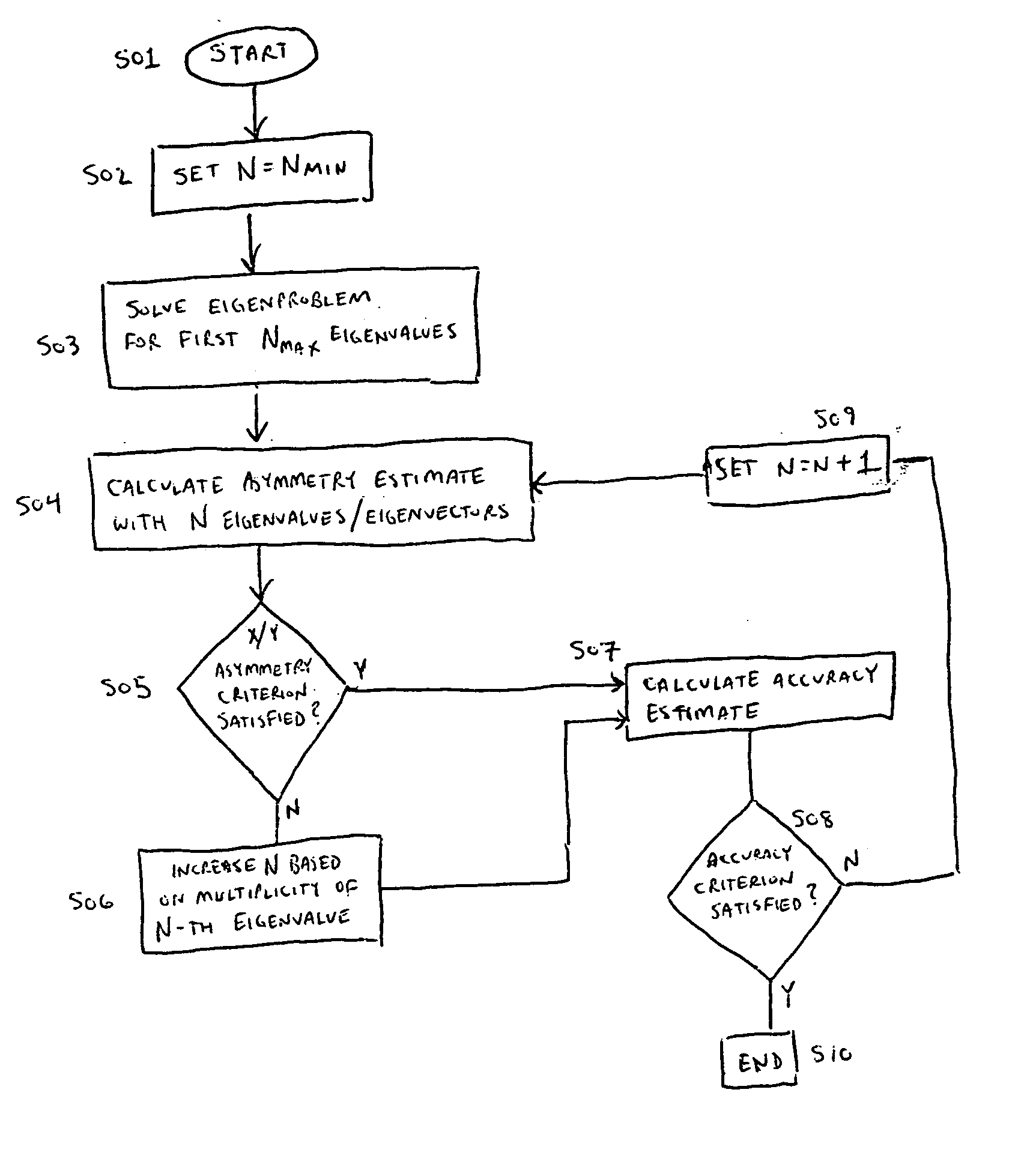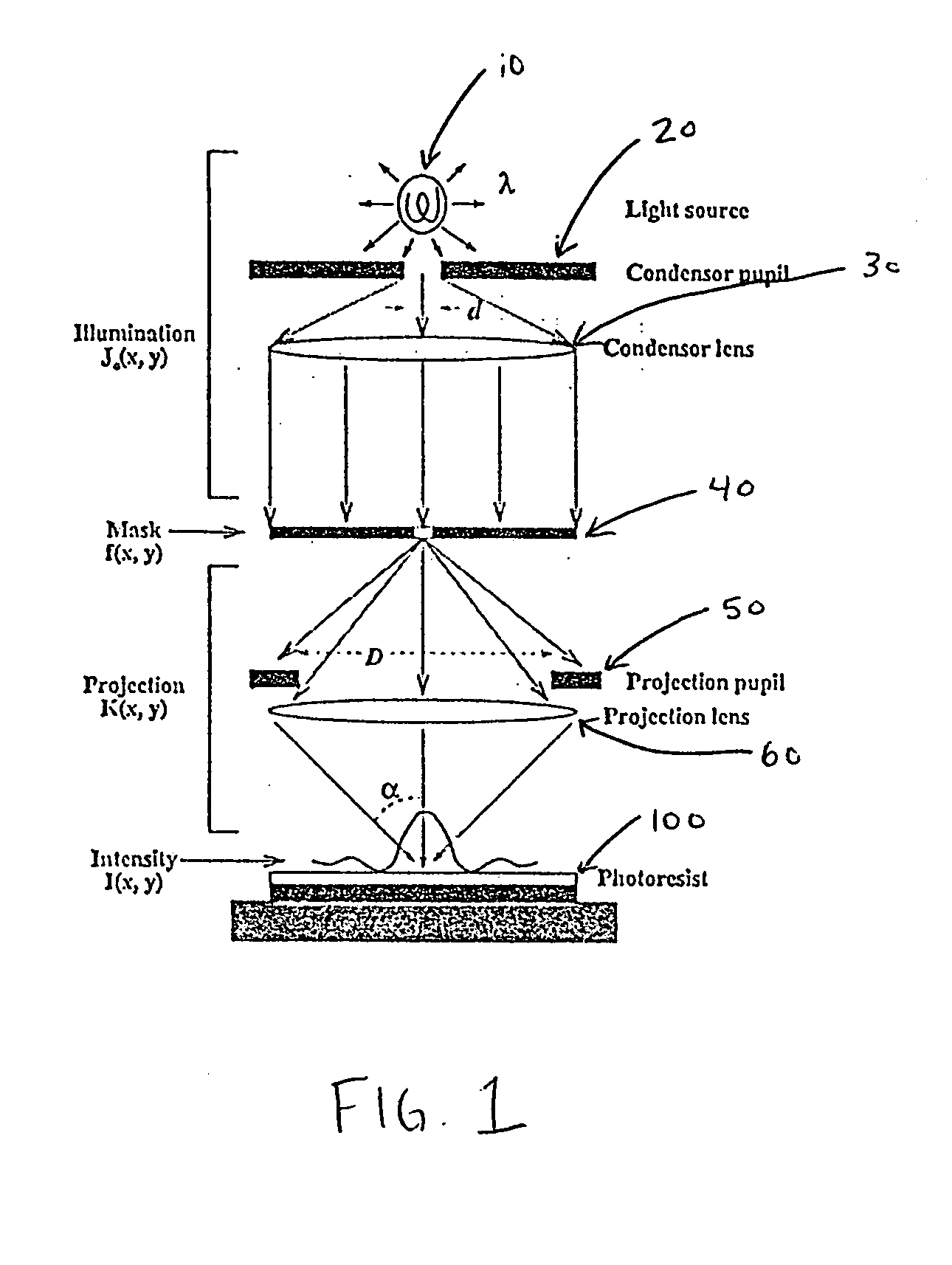Method for optimizing a number of kernels used in a sum of coherent sources for optical proximity correction in an optical microlithography process
a technology of optical proximity correction and kernel optimization, applied in the field of mask design, can solve the problems of increasing computation time and run time memory requirements, reducing the efficiency of coherent kernels, and reducing the efficiency of small elements of illumination sources
- Summary
- Abstract
- Description
- Claims
- Application Information
AI Technical Summary
Benefits of technology
Problems solved by technology
Method used
Image
Examples
Embodiment Construction
[0015] Current optical projection systems employed in optical lithography exclusively use partially coherent illumination. FIG. 1 is a schematic of a typical projection system. The projection system 1 includes a light source 10, a first condenser pupil 20, a first condenser lens 30, a mask 40, a second projection pupil 50, and a second projection lens 60. The projection system 1 in this case is used to form a pattern in a photoresist 100.
[0016] The process of partially coherent optical imaging may be described by the following nonlinear integral equation (the Hopkins model): I(x,y)=[T(f)](x,y)=∫∫∫∫f(ξ1,ξ2)J0(ξ1,ξ2,η1,η2)f*(η1,η2)·K(x,y,ξ1,ξ2)K*(x,y,η1,η2)ⅆξ1ⅆξ2ⅆη1ⅆη2(1)
where: [0017] T( ) is the bilinear imaging operator; [0018] I( ) is the intensity image at the image plane; [0019] f( ) is the object being imaged (mask); [0020] K( ) is the coherent point spread function—describing properties of the projection system; and [0021] J0( ) is the mutual intensity func...
PUM
| Property | Measurement | Unit |
|---|---|---|
| light intensity | aaaaa | aaaaa |
| optical proximity | aaaaa | aaaaa |
| shape | aaaaa | aaaaa |
Abstract
Description
Claims
Application Information
 Login to View More
Login to View More - R&D
- Intellectual Property
- Life Sciences
- Materials
- Tech Scout
- Unparalleled Data Quality
- Higher Quality Content
- 60% Fewer Hallucinations
Browse by: Latest US Patents, China's latest patents, Technical Efficacy Thesaurus, Application Domain, Technology Topic, Popular Technical Reports.
© 2025 PatSnap. All rights reserved.Legal|Privacy policy|Modern Slavery Act Transparency Statement|Sitemap|About US| Contact US: help@patsnap.com



